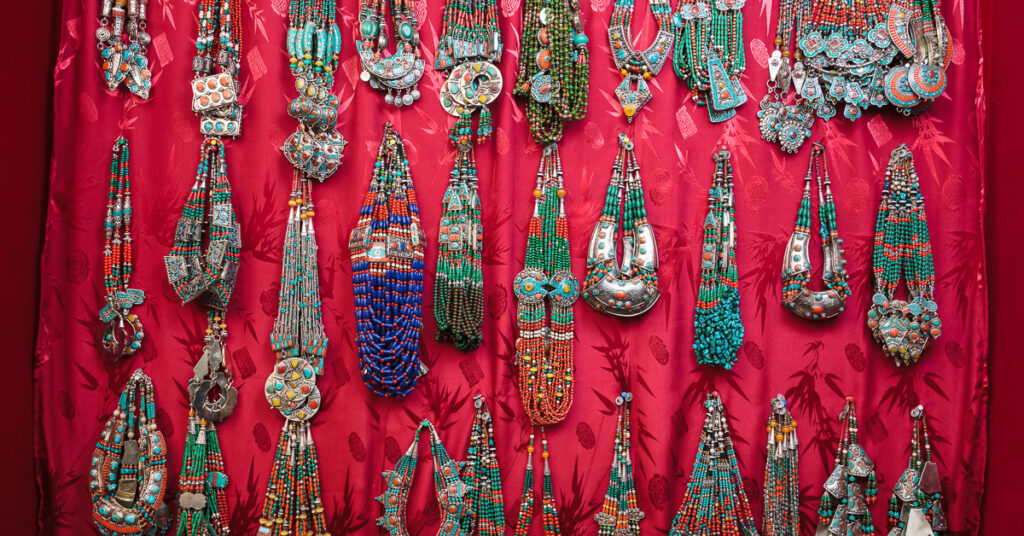
Gary Wornell visits the workshop of Abbas Karim Bhatt, who brings resplendent Tibetan jewellery to the bustle of Kathmandu.
In the almost ten years I have been travelling to Nepal I have lived all over the city, finding places to stay with the help of the artists and craftspeople I have been researching. From the heart of the Newari peoples in the ancient city of Patan to Lazimpat and Naxal, I found myself over time, working my way slowly northeast towards Boudha where I have now lived for the best part of five years. I no longer have luggage on my return journeys to Finland but keep a small apartment and electric scooter in Ramhiti where I maintain a minimal lifestyle with few possessions. My kitchen has a coffee maker, Japanese ceramic bowls, some good kitchen knives, a few basic cooking pots and pans, and a cutting board and cutlery. It doesn’t get much simpler than that. I do have a fridge but rarely use it as fresh vegetables are available at the half dozen shops on my street which are open until 8 or 9 each evening.
Before moving to Boudha I lived for several months on a quiet side street in Lazimpat not far from the bustling tourist centre of Thamel. “Quiet”, is relative in Kathmandu. In this city, you go to sleep with the sound of dogs barking. You also wake to the sound of dogs barking, and during the day when everyone is awake they stop barking and sleep, but then you will notice the tap-tap of hammers on metal and the hiss of a torch from a workshop close by. For a while, I thought I might never get used to it, and then suddenly one day it just vanished into the background.
Kathmandu is by and large a concrete jungle with houses crammed close together and often taking up the entire plot of land. Families rent out the dark lower floors of their houses for a regular income and occupy the sunnier top floors for themselves where the surrounding buildings don’t obscure the light. My apartment never got direct sunlight through the windows, but my terrace did and I spent as much time as I could catching the few minutes of sunshine available around midday, before returning to my laptop in the kitchen. Most of the time though, I was out and about on a scooter or bicycle exploring every corner of the city. By now I know Kathmandu better than any other city I have lived in including Montreal, London, Tokyo and Helsinki, and have familiarised myself with a complex network of tiny lanes off the main roads that can literally cut hours off a journey during the rush hours.
I discovered that my landlord was a Tibetan jewellery maker
This craft project started while I was living in this corner of town, and it wasn’t until I was well into my research that I discovered that my landlord was a Tibetan jewellery maker and that the tap-tapping and sounds of gas torches sparking to life and echoing off the walls of the street were in fact coming from the workers in his “factory” across the road. Factories are often incorporated into the ground floors of buildings in rooms that were designed for domestic use and rarely are equipped with adequate lighting or electric power points. Wires without plugs on them hang precariously out of sockets and trail across floors in an alarmingly casual manner, so that one has to be acutely aware of where one is walking.
And so it was that I met Abbas Karim Bhatt, a Tibetan Muslim of Brahmin origins making Himalayan ethnic jewellery. His family came from a mixed religious background, but the family follows the Islamic faith and somewhere in this mix of religions in Nepal I found the tolerance and compatibility of people to be remarkable. There was a civil war in Nepal lasting the best part of ten years from 1996, but I was surprised to hear that no blood has been shed because of religious differences. In any case, I found it somehow interesting that Buddhist Tibetan Jewellery was a craft that these Islamic people are gifted at, expressing some surprise from Abbas when I brought the topic up.
The jewellery workshop is situated opposite his home, on the second floor of an unpainted concrete building. Women work on stones and settings in one room and men cut and braze metal in the other. Out on the terrace is a polishing machine, which occasionally whirs into action, as do the Dremels the women are using. In recent years the electricity supply to the city is near-constant thanks to the diligent work of one man in government who stopped the illegal tapping of the power lines, introducing metres to every property in the region. The days of load shedding, which when I first visited Nepal could last 8-12 hours per day, are largely a thing of the past. The tiny space occupied by the women isn’t more than five square meters in area, crowded with marble counters and wooden benches, and yet they worked more or less on top of each other without difficulty.
- Two women polishing jewellery on the terrace of a workshop in Lazimpat, Kathmandu.
- A craftsman in a small workshop in Lazimpat, Kathmandu, works at a bench brazing silver elements together for Tibetan Jewellery.
- A woman grinds the rough edges of newly braised silver components using a power tool. Electricity is provided by inverters when power rationing takes place in Kathmandu.
In the 1990s I had taught for a time in Lahti in the jewellery department of a design school and my experience was limited to the highly sophisticated world of contemporary technologies with 3-D printers and computer-aided design. Even with those emerging processes, jewellery making relied very much on hand skills. Here in this tiny studio in Kathmandu, I saw the simple origins of jewellery making that hadn’t really changed for centuries.
In the other room, three men work on the bare metal, either cutting with a hammer and die on a wooden block, or brazing elements together with a gas torch.
Abbas lives with his wife, son, mother and sister on two floors above my apartment. On the top floor out in the bright midday sun, women sit around a small plastic table in the bright sun threading the beads, stones and silver elements that make up the necklaces. Spools of strong cord are cut and tied; the workers pause every now and then to count the beads or search through the galaxy of coloured elements spread out on the table. Most of the designs are strictly traditional, but Abbas creates his own versions with a modern twist. The most common materials are turquoise, lapis, red coral, large pieces of amber and glass beads with some of the work being made with white metal or sterling silver.
- Detail of an antique ceremonial headdress with turquoise, coral and other semi-precious stones with modern necklace placed over the top.
- Beads and silver components on a work table at Abbas Karim Bhatt’s jewellery factory in Lazimpat.
- Locally made beads and nylon threads on a table.
- Detail of an ornate headdress with heavy pattern of stones sewn into the leather.
There is so much jewellery in Nepal: mostly following ancient tradition, with very few contemporary designers. Each ethnic group has their own styles. There are variations in size, colour and decorative treatment with nose and ear piercings of gold and headpieces that include symbols of the sun and moon. I have often seen women in the remote villages outside the valley wearing ornate gold pieces through their noses hanging down over their mouths. It is believed that the gold will purify the water as they drink.
I occasionally visit Abbas’ shop in Thamel, sit with him, and drink tea as dealers from China and India come to buy. In glass-fronted cabinets, headdresses, bib necklaces, ornamental hats and bracelets are displayed—some of them antiques, huge objects like sculptures with heavy stones sewn onto leather and cloth backgrounds with silver ornamentation that must have been tiring to wear. I had seen examples of them of course in museums and old photographs, where the women’s chests were covered like armour plating on their wedding day with hundreds of semi-precious stones, amber and coral—a symbol of wealth and prestige draped over a young wife.
Photographs by Gary Wornell
About Gary Wornell
 Gary Wornell is an artist, photographer, film-maker, master print-maker, photojournalist, author and independent curator. A Canadian citizen, Gary has lived for extensive periods in the UK, Finland and Nepal. He divides his time between Finland and Nepal. In the last three years, he has worked as OECD-Finland-EU Social Protection Systems mobile device video trainer in Kyrgyzstan, Ethiopia, Cambodia and Zambia. He is currently active as design and marketing consultant to the Nepal infant clothing enterprise – Kokroma.com setting up their online shop, social media presence and developing production tools and methods for the clothing brand’s workshop in Kathmandu. He is book designer, photographer and author of Treasure of Nepal, Maahenki Finland 2016 – ISBN-10 9523010824 and designer Co-Author of Crafting a New Future for Nepal’s Traditional Artisans, PAF-The World Bank Group 2018 ISBN-9789937036511.
Gary Wornell is an artist, photographer, film-maker, master print-maker, photojournalist, author and independent curator. A Canadian citizen, Gary has lived for extensive periods in the UK, Finland and Nepal. He divides his time between Finland and Nepal. In the last three years, he has worked as OECD-Finland-EU Social Protection Systems mobile device video trainer in Kyrgyzstan, Ethiopia, Cambodia and Zambia. He is currently active as design and marketing consultant to the Nepal infant clothing enterprise – Kokroma.com setting up their online shop, social media presence and developing production tools and methods for the clothing brand’s workshop in Kathmandu. He is book designer, photographer and author of Treasure of Nepal, Maahenki Finland 2016 – ISBN-10 9523010824 and designer Co-Author of Crafting a New Future for Nepal’s Traditional Artisans, PAF-The World Bank Group 2018 ISBN-9789937036511.

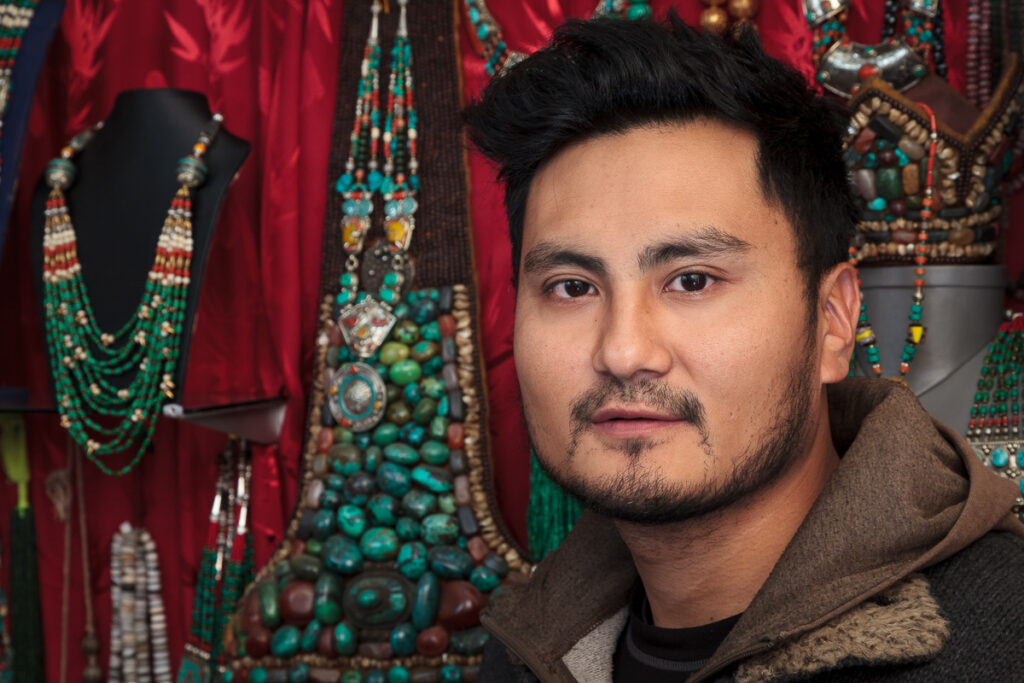
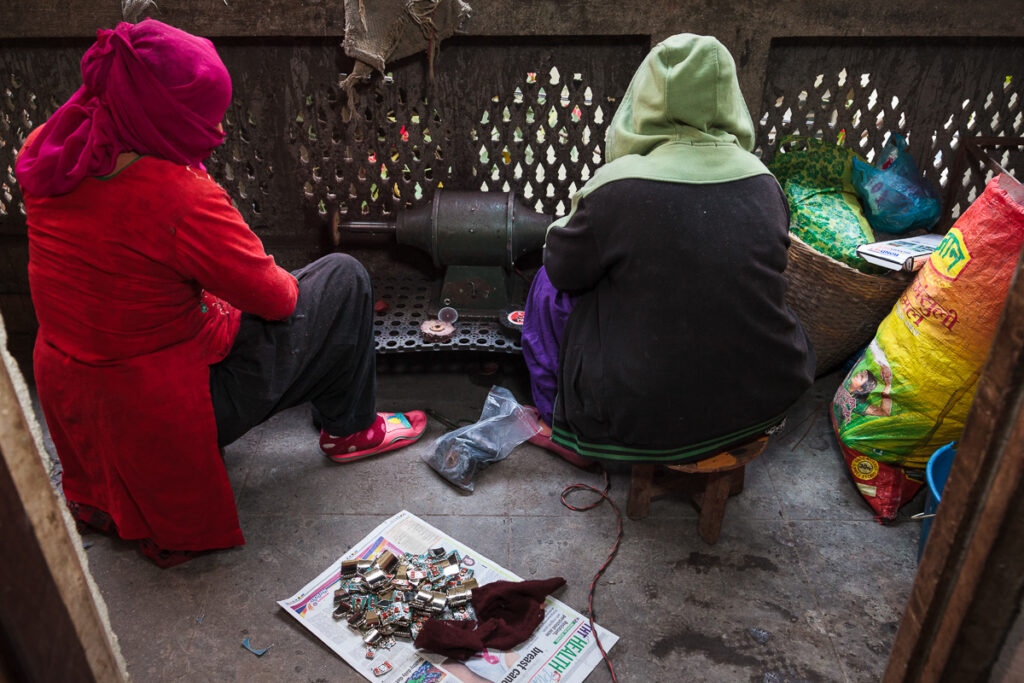
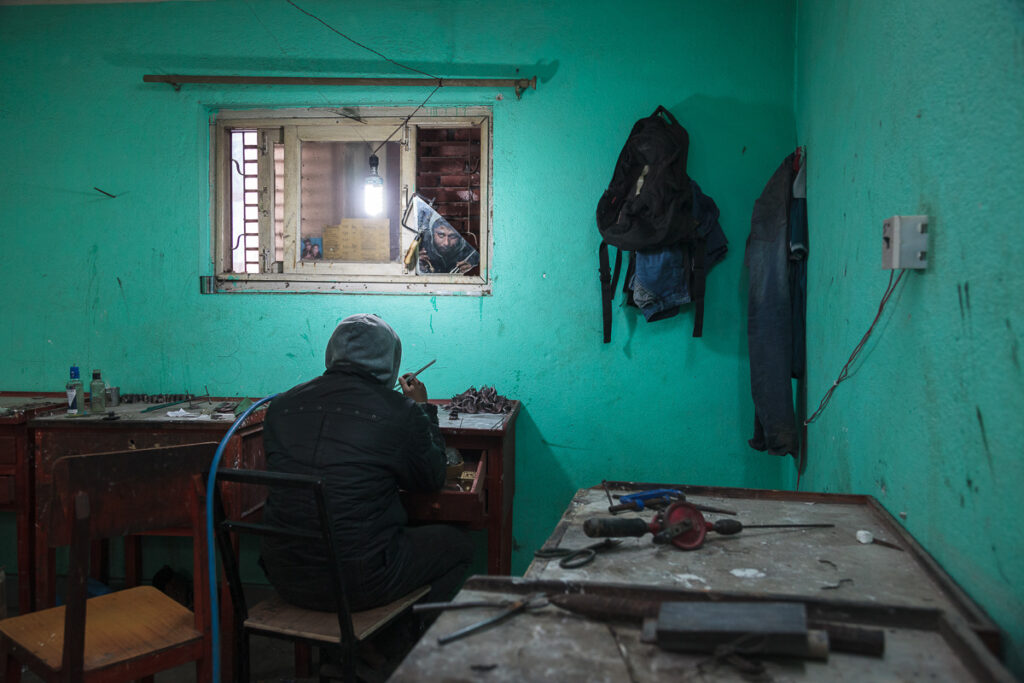
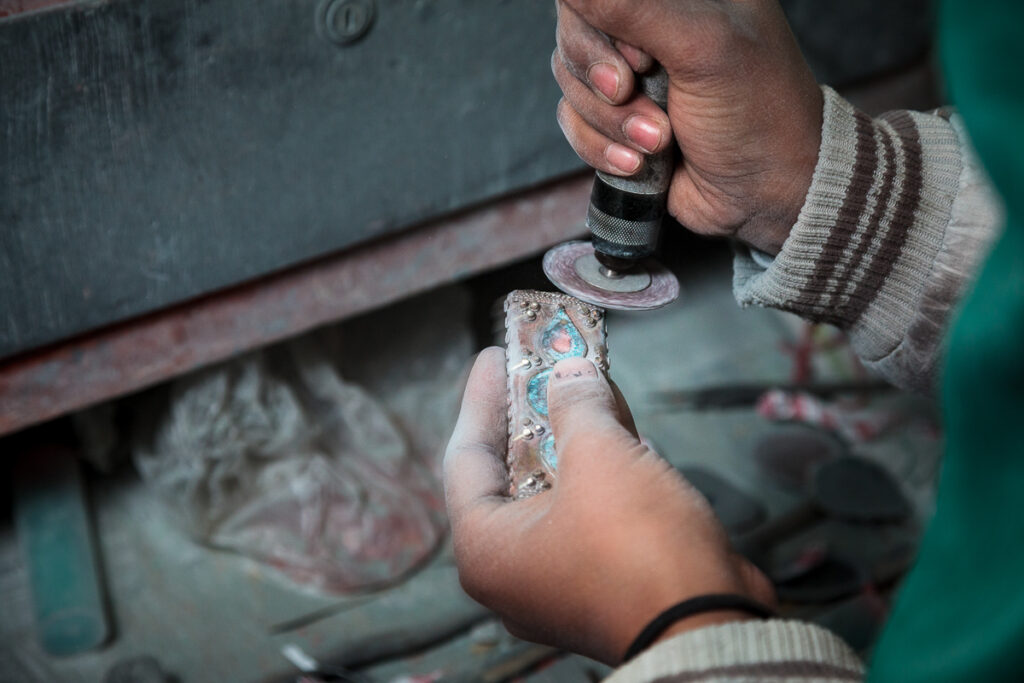
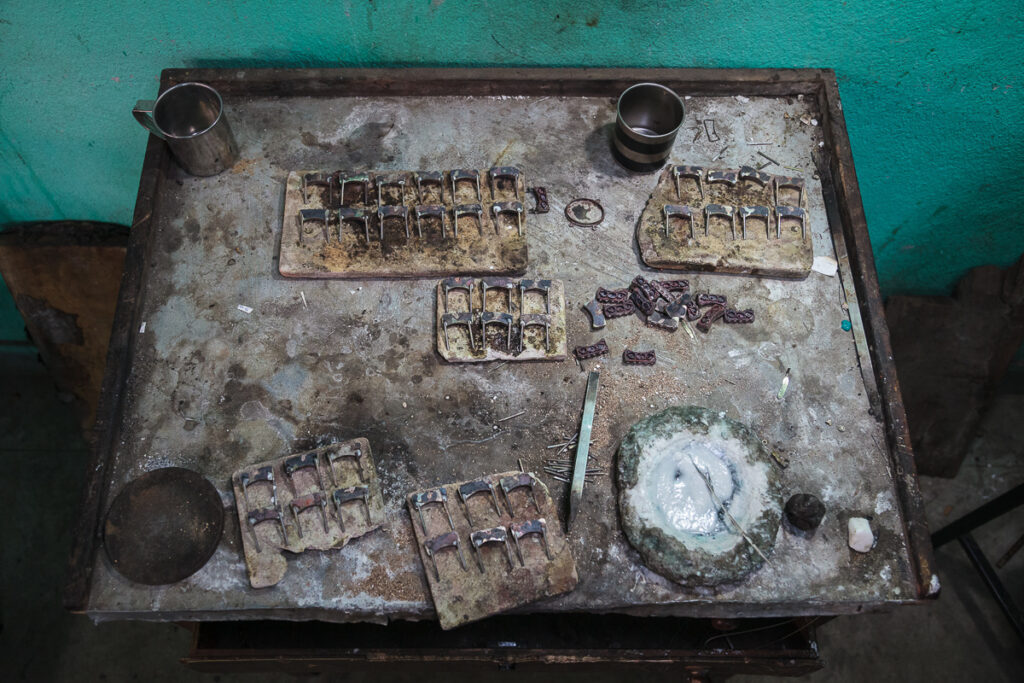





Comments
Thank you for sharing the beautiful pieces and story of Tibetan jeweller Abbas Karim Bhatt and his workshop. Exquisite works.
I remember visiting Thamel in 2011 and being enamoured by all the jewellery shops. I was on a shoestring budget and couldn’t buy more than a bracelet. However, I vowed to come back someday, with enough money (or so I thought then!) Your article brought many memories to the surface so thank you for the same. Now I want to visit, just to stroll through the market and enjoy all the sights and sounds. Maybe sit and make jewellery there.
Transported to the backstreets Thanks Gary
Namaste,
I AM kush from pokhara,nepal
Need details address OR contact number from Abbas Karim Bhatt, please help me to find his art .
Thank you
Kush
Can i contact abbas karim for business